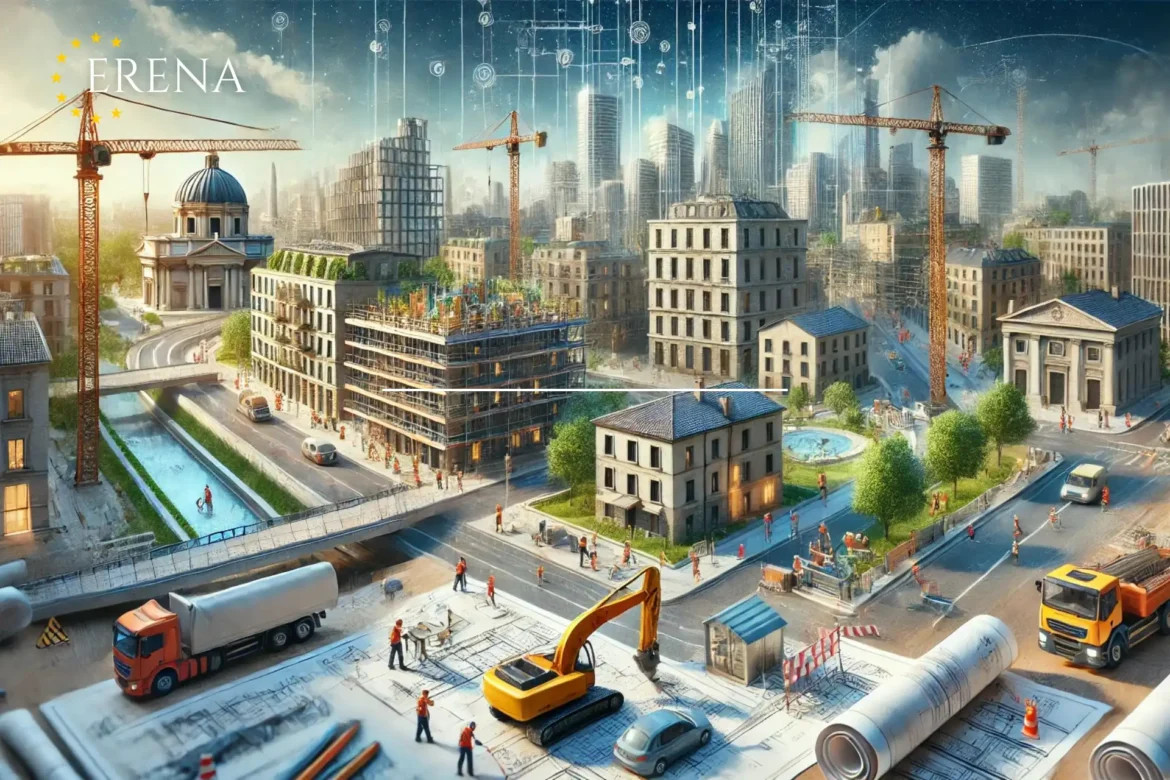Over the past three years, Italy’s construction sector has undergone significant changes. These changes were driven by global events, such as the COVID-19 pandemic, and internal reforms aimed at modernizing infrastructure and revitalizing the economy. Let’s take a closer look at the key trends, challenges, and prospects of this sector.
1. Impact of the Pandemic and Economic Recovery
1.1. Effects of the COVID-19 Pandemic
The COVID-19 pandemic in 2020 caused a significant decline in the construction sector. Due to strict restrictions, many projects were temporarily halted, leading to decreased construction volumes and increased costs. Companies faced supply chain disruptions and rising material costs, exacerbating the situation.
However, starting in 2021, the sector began to recover gradually. A major role in this recovery was played by government support measures aimed at stimulating construction and renovating properties.
1.2. Government Initiatives
One of the key initiatives was the introduction of the Superbonus 110% program, which provided significant tax incentives for the renovation of residential properties to improve their energy efficiency. This program boosted demand for construction services and contributed to increased activity in the sector.
2. Green Construction and Sustainable Development
2.1. Popularization of Green Construction
The growing awareness of the need to combat climate change has driven the development of green construction. Italian companies are actively adopting energy-efficient technologies and using environmentally friendly materials. Such projects have become an essential part of the country’s sustainable development strategy.
Innovations include the widespread use of solar panels, rainwater harvesting systems, and energy-efficient heating and lighting systems. These changes not only minimize the ecological footprint but also provide savings on utility costs for residents.
2.2. Infrastructure Modernization
Significant attention is being paid to modernizing infrastructure with a focus on environmental standards. Projects for the reconstruction of roads, bridges, and public buildings include sustainable development elements, such as the use of recycled materials and renewable energy sources.
3. National Recovery and Resilience Plan (PNRR)
3.1. Infrastructure Investments
The National Recovery and Resilience Plan became a catalyst for the development of the construction sector. This plan, funded by the European Union, aims to revive the economy after the pandemic. A significant portion of the funds is allocated to infrastructure projects, creating new jobs and stimulating sector growth.
3.2. Key Directions of the Plan
The plan’s priorities include:
• Transport system reconstruction: Improvements to roads, railways, and public transport systems.
• Construction of public facilities: New schools, hospitals, and medical centers meeting modern standards.
• Digitalization: The use of technologies such as Building Information Modeling (BIM) optimizes design and construction management processes.
4. Key Challenges of the Sector
4.1. Rising Material Costs
The rising prices of construction materials have become one of the most pressing issues in recent years. Increased costs of resources such as steel, concrete, and timber are linked to global supply chain disruptions and higher transportation expenses. This raises project costs and creates additional challenges for contractors.
4.2. Labor Shortages
The shortage of skilled labor is another problem facing the construction sector. An aging workforce and low interest among young people in construction professions exacerbate the situation. This is especially critical for high-tech projects that require specialized knowledge and skills.
4.3. Bureaucratic Barriers
Complex bureaucratic procedures in Italy significantly slow down the implementation of construction projects. Obtaining permits and approvals takes a long time, negatively affecting project timelines and the overall pace of sector development.
5. Innovation and Digitalization
5.1. Adoption of Digital Technologies
Digitalization of processes has become an important aspect of the construction sector’s development. Technologies such as BIM, which allow for the creation of digital building models, greatly simplify coordination among project participants and reduce the likelihood of errors.
5.2. Automation and Robotics
Automation of construction processes and the use of robots are gradually becoming more common. Robots can perform tasks such as bricklaying or concrete pouring, speeding up construction and reducing reliance on manual labor.
6. Prospects and Future of the Sector
6.1. Sustainable Growth
The Italian construction sector is expected to continue growing, supported by government and international organizations. Sustainable development programs and infrastructure modernization will remain key areas in the coming years.
6.2. Adapting to Climate Change
Given the frequent extreme weather events in Italy, significant attention is being paid to constructing facilities that are resilient to climate change. This includes the development of buildings capable of withstanding floods and earthquakes.
6.3. Education and Workforce Training
To address the labor shortage, educational programs aimed at training young people in modern construction technologies are being implemented. This will help attract new specialists to the industry and improve the overall level of workforce qualifications.
Italy’s construction sector has shown steady recovery and development over the past three years. Despite complex challenges such as the pandemic, rising material costs, and labor shortages, the industry remains a vital driver of economic growth. Government initiatives, technological innovation, and a focus on sustainable development allow Italy to look confidently into the future. By addressing structural issues, the construction sector can become even more efficient and competitive on a global scale.
Construction Sector in Italy – Development Over the Past 3 Years
611
previous post

